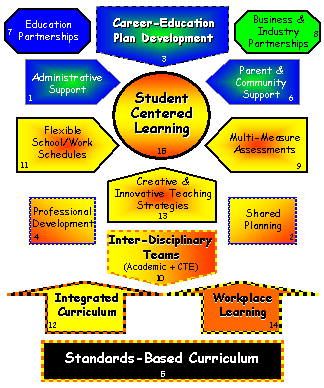Have you heard of the newest movement in Professional Development? It’s called Ed Camp and it all started here in Philly.
What is Ed Camp? The following two video shorts explain it very well. Scroll below the videos to see pictures and my reflections about my first Ed Camp experience as well as additional Ed Camp resources.
If you have the chance to participate in an Ed Camp, do!
You will not be disappointed.
My Ed Camp Philly 2012 Experience!
This was my first Ed Camp. It was so much fun listening to and talking with other educators. No matter what the field or grade band, we all shared one thing: a passion for learning. Here’s how the day went:
1. Arrival. Ed Camp is not open to walk-ins. All attendees had pre-registered. This year’s camp was held in the Wharton School of Business at the University of Pennsylvania.
2. Once checked in we immediately walked into the planning room where educators suggested topics of discussion and planned their day. There was plenty of chatter and excitement about the day and it’s possibilities.
In addition to the break out sessions, there was the opportunity to spend time in deep discussion on a particular topic. This is called the Inquiry Room. The topic of discussion for the Inquiry Room was determined by suggestion and then vote. Teachers wrote their ideas on flip chart and voted by placing dots next to the topic they would like to explore in depth. The Inquiry Room topic of choice: Blended Learning. All of this activity, sharing and snacks took about an hour.

3. The next activity was a quick opening assembly where the expections of the day were explained.

Ed Camp “housekeeping”:
- What to expect
- “Rule of two feet”
- The Inquiry Room
- “Leave no trace”
- Security sign-in (required)
- Visit edcampphilly.org
- Lunch & after-party details
4. The schedule revealed (let the Twitter chat begin! #edcampphilly):

5. Two morning session time blocks. I’ll post some pictures of what it looked like.

Students participated in a presentation about physics, gaming and social networking.

There was time for networking and professional sharing.

6. Lunch: An hour of meeting, eating and sharing
7. The afternoon sessions-two more sessions of learning and sharing. What’s great about Ed Camp is that everyone participates and shares in every session.



8. The Smackdown. The end of the day was a celebration and sharing. A smackdown is where people wanting to share have two minutes to do so. It’s fast and furious and fun! I’ll post some pictures from the experience.
The line-up:

The sharing (more sharing of important Ed Camp resources below pictures):






The incredible Ed Camp Philly organizers:

Ed Camp resources:
Ed Camp Philly Ed Camp started in Philly. It is a result of gifted educators–and they met online!
Ed Camp Foundation Ed Camp has gone global in just two short years. I know why-it’s an amazing Professional Development experience.
Ed Camp Wiki Thinking you might like to host an Ed Camp? See this wiki for the how-to’s!
Ed Camp @ TEDxPhiladelphiaED-Kristen Swanson
Thanks, Kevin Jarrett, for sharing your photos!
Filed under: K12, Professional Development | Tagged: Ed Camp, Ed Camp Philly, Education, learning, Professional Development, teaching | 1 Comment »




